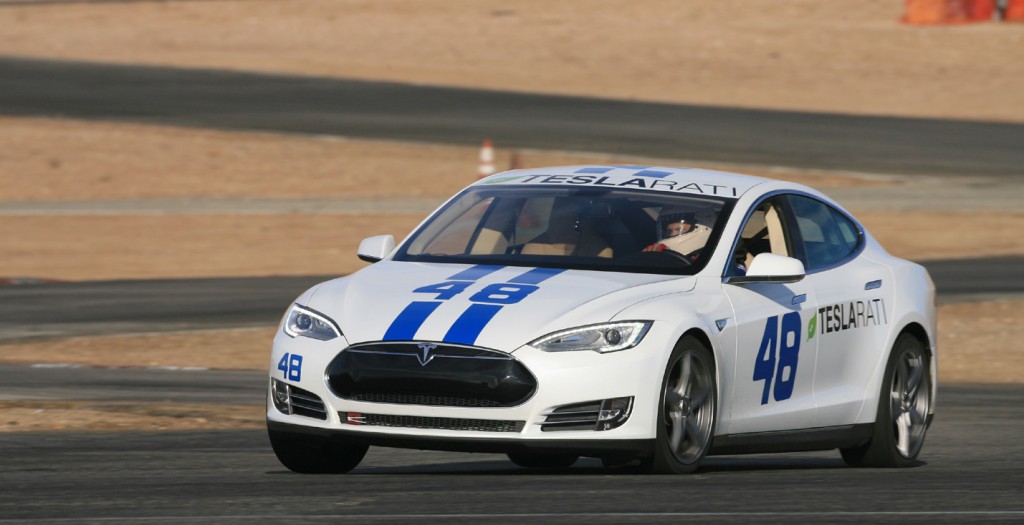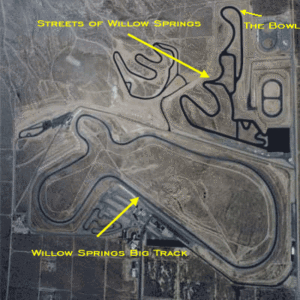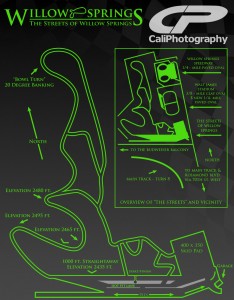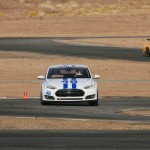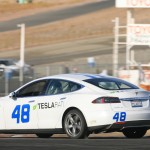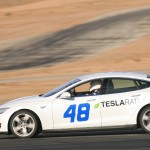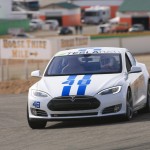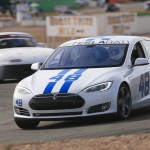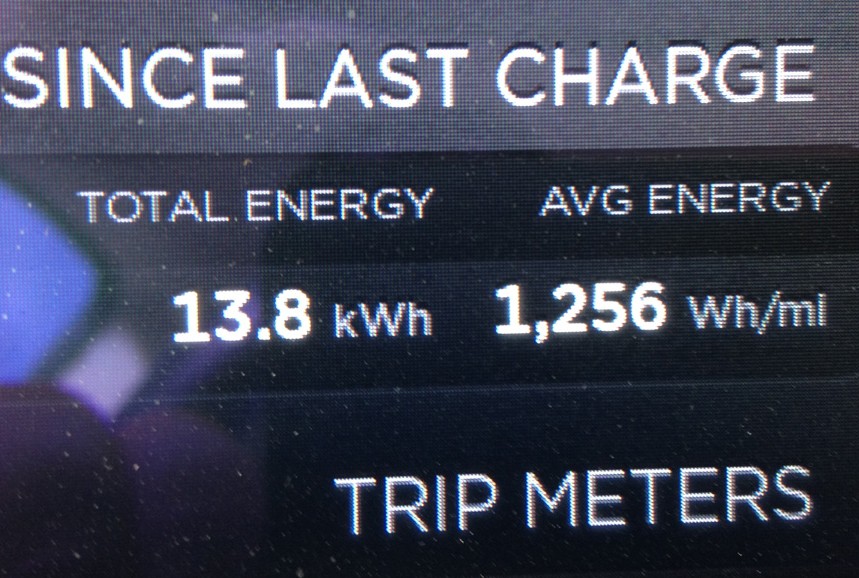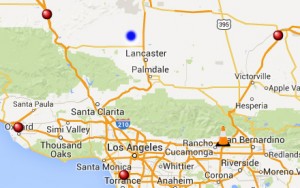Lifestyle
Tesla power limiting may also occur on extreme G-forces
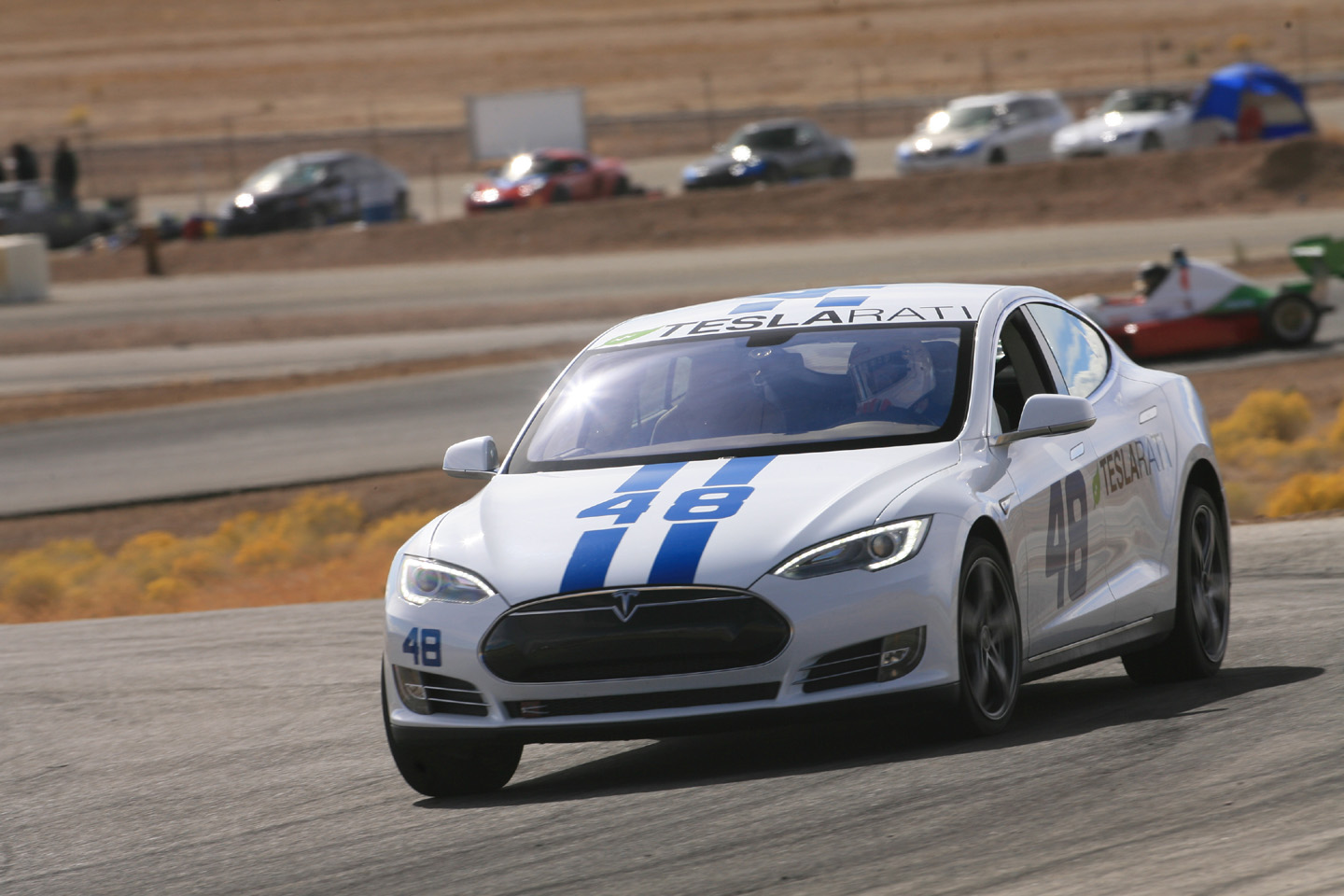
New racetrack discovery indicates Tesla power limiting may go beyond just temperature sensing.
We recently set out to conquer (once more) the Streets of Willow Springs racetrack, a technical, 1.6 miles long, with 13 turns, located approximately an hour north of Los Angeles. Being a short track with a lot of turns (most tracks are 2 to 3 miles long), it’s considered a relatively low speed track. There’s opportunity to briefly reach 100+ mph on straightaways, but most of the time is spent within the 40mph to 80mph range.
Streets of Willow Springs is an excellent track for practicing turns at lower speeds. Unlike our race at Laguna Seca which proved to be one of the more difficult and dangerous tracks we’ve driven, this track had no retaining walls, smooth shoulders and overall a much less dangerous track to race on.
Tesla Model S Configuration
Tesla’s infamous power limiting feature to prevent overheating was not nearly as pronounced this time around because of the short bursty nature of the track. We could easily achieve a full five timed-laps without the dotted power limit line dropping below 160kw mark.
We used a set of new Toyo R888 racing tires (19″, 265 width) this time around as opposed to our usual BFGs. The Toyo’s held up exceptionally well in terms of wear and durability while also providing great traction. It was a cold day (temperature in the 50s) so we kept tire pressure higher than usual, aiming for 36 psi hot.
The Model S experienced a bit of steering wheel lockup through turn 1 (known issue), but it was very short lived.
New Tesla Power Limiting Feature?
A new phenomenon was discovered on the Model S where the vehicle appears to cut power when experiencing high lateral G-forces along, and when the car is angled from flat level ground.
Case in point is the track’s #8 bowl turn which sports a 20 degree bank. This is where we experienced losing power for a brief second or two as we into the bank pushing nearly 1.2 Gs. The behavior can be seen in the video (2:20 min mark) where we were unable to accelerate past 40mph. We speculate that the combination of G-forces and angle from level ground (measured by the vehicle’s internal gyro) might be simulating an accident scenario, hence Tesla’s onboard system disables any additional use of power.
Performance
Best lap time was 1:31, which was a nice improvement over last year’s 1:39. Our Teslarati 48 ran within the Green (Advanced) group with Speed Ventures. The fastest time in the class came in at 1:26 (Formula Mazda) while the slowest was 1:36. We felt that there was still a lot of room for improvement and with a little more practice, we should easily break below 1:30 next time. If not for the power limiting features of the Model S our lap times could be at minimum five seconds faster.
The max lateral G came in at 1.2 G which is on par with what we experienced in the past (using G-Force Rival tires).
Charging and Power Consumption
Power consumption came in at 1.2 kw / mile which translates to approximately 4 rated miles used per 1 actual mile of distance travelled.
There is a set of RV stalls within a 5 minute walk from the Streets. Unfortunately, there was only one stall with a 50 amp outlet which happened to be taken. We ended up pitting one mile away by the garage at Big Willow which had a couple of 240v 50amp outlets.
Travel
There are several possibilities of getting to and from the track.
ALSO SEE: Interactive Tesla Supercharger Map
- Hawthorne Supercharger has been the charger of choice for us thus far. It’s 95 miles away, but because of significant elevation changes, coming to Willow Springs will consume over 110 miles of range, even when driving super conservatively. Coming back it will take only 90 rated miles.
- Oxnard Supercharger just opened which is a little closer to the track at 87 miles away. Coming back will require only 66 rated miles making it a very attractive option.
- Barstow Supercharger is 103 miles away from the track (EV Trip Planner estimated 105). The shortest route seems to be through Victorville, however it used 120 miles of range even while driving very conservatively likely due to the strong winds and elevation changes.
- The Rancho Cucamonga Supercharger that’s currently under construction, appears to be a good option at 93 miles away.
From the North or West
And traveling from the North or West, Tejon Ranch Supercharger is the best option. 60 miles away, requiring 73 rated miles to get there but only 55 back.

Lifestyle
Tesla Model S Plaid battles China’s 1500 hp monster Nurburgring monster, with surprising results
There is just something about Tesla’s tuning and refinement that makes raw specs seem not as game-changing.

The Tesla Model S Plaid has been around for some time. Today, it is no longer the world’s quickest four-door electric sedan, nor is it the most powerful. As per a recent video from motoring YouTube channel Carwow, however, it seems like the Model S Plaid is still more than a match for some of its newer and more powerful rivals.
The monster from China
The Xiaomi SU7 Ultra is nothing short of a monster. Just like the Model S Plaid, it features three motors. It also has 1,548 hp and 1,770 Nm of torque. It’s All Wheel Drive and weighs a hefty 2,360 kg. The vehicle, which costs just about the equivalent of £55,000, has been recorded setting an insane 7:04.957 at the Nurburgring, surpassing the previous record held by the Porsche Taycan Turbo GT.
For all intents and purposes, the Model S Plaid looked outgunned in Carwow’s test. The Model S Plaid is no slouch with its three motors that produce 1,020 hp and 1,420 Nm of torque. It’s also a bit lighter at 2,190 kg despite its larger size. However, as the Carwow host pointed out, the Model S Plaid holds a 7:25.231 record in the Nurburgring. Compared to the Xiaomi SU7 Ultra’s record, the Model S Plaid’s lap time is notably slower.
Real-world tests
As could be seen in Carwow’s drag races, however, Tesla’s tech wizardry with the Model S Plaid is still hard to beat. The two vehicles competed in nine races, and the older Model S Plaid actually beat its newer, more powerful counterpart from China several times. At one point in the race, the Xiaomi SU7 Ultra hit its power limit due to its battery’s temperature, but the Model S Plaid was still going strong.
The Model S Plaid was first teased five years ago, in September 2020 during Tesla’s Battery Day. Since then, cars like the Lucid Air Sapphire and the Xiaomi SU7 Ultra have been released, surpassing its specs. But just like the Model Y ended up being the better all-rounder compared to the BYD Sealion 7 and the MG IM6, there is just something about Tesla’s tuning and refinement that makes raw specs seem not as game-changing.
Check out Carwow’s Model S Plaid vs Xiaomi SU7 drag race video below.
Lifestyle
500-mile test proves why Tesla Model Y still humiliates rivals in Europe
On paper, the BYD Sealion 7 and MG IM6 promised standout capabilities against the Model Y.

BYD is seeing a lot of momentum in Europe, so much so that mainstream media has taken every opportunity to argue that the Chinese automaker has beaten Tesla in the region. But while BYD sales this year in Europe are rising and Tesla’s registrations remain challenged, the raw capabilities of vehicles like the Model Y are difficult to deny.
This was highlighted in a 500-mile challenge by What Car? magazine, which showed that the new Tesla Model Y is more efficient, cheaper to run, and more reliable than rivals like the BYD Sealion 7, and even the nearly 400 KW-charging MG IM6.
Range and charging promises
On paper, the BYD Sealion 7 and MG IM6 promised standout capabilities against the Model Y. The Sealion 7 had more estimated range and the IM6 promised significantly faster charging. When faced with real-world conditions, however, it was still the Model Y that proved superior.
During the 500-mile test, the BYD nearly failed to reach a charging stop, arriving with less range than its display projected, as noted in a CarUp report. MG fared better, but its charging speeds never reached its promised nearly-400 kW charging speed. Tesla’s Model Y, by comparison, managed energy calculations precisely and arrived at each stop without issue.
Tesla leads in areas that matter
Charging times from 25% to 80% showed that the MG was the fastest at 17 minutes, while Tesla and BYD were close at 28 and 29 minutes, respectively. Overall efficiency and cost told a different story, however. The Model Y consumed 19.4 kWh per 100 km, compared to 22.2 for MG and 23.9 for BYD. Over the full trip, Tesla’s charging costs totaled just £82 thanks to its supercharger network, far below BYD’s £130 and MG’s £119.
What Car? Magazine’s testers concluded that despite BYD’s rapid sales growth and the MG IM6’s seriously impressive charging speeds, Tesla remains the more compelling real-world choice. The Model Y just offers stability, efficiency, and a proven charging infrastructure through its Supercharging network. And as per the magazine’s hosts, the Model Y is even the cheapest car to own among the three that were tested.
Watch What Car? Magazine’s 500-mile test in the video below.
Lifestyle
Tesla Cybertruck slapped with world’s least intimidating ticket, and it’s pure cringe
One cannot help but cringe and feel second-hand embarrassment at the idea of a person just driving around with a stack of these babies.

A Cybertruck parked at Stanford Shopping Center in California was recently hit with what might be the most try-hard piece of paper ever slipped under a wiper blade: a “fake citation” accusing the driver of supporting a “fascist car.”
The note, shared on X by Tesla staff program manager Ryan Torres, quickly made the rounds on X, where it quickly gained attention as an example of how not to protest.
The world’s least intimidating ticket
According to the citation, the supposed “violation” was “driving a fascist car.” The remedial action? Take the bus, call an Uber, or ride a bike. The note also dubbed Elon Musk a “chainsaw-wielding Nazi billionaire.” Now, protests against Tesla and Elon Musk have become commonplace this year, but one cannot help but cringe and feel second-hand embarrassment at the idea of a person just driving around with a stack of fake anti-Tesla/Musk citations.
Torres pointed out the irony himself in his post on X. Tesla currently employs over 140,000 Americans, and SpaceX has put the U.S. firmly back at the top of space technology. As Torres put it, maybe the person behind the world’s least intimidating ticket should “read a book on innovation before vandalizing” other people’s property.
Peak performative clownery
Not to mention that the fake ticket’s logic collapses under its own weight. EVs like the Cybertruck are literally designed to reduce emissions, not “destroy the economy.” If anything, Tesla has bolstered the United States’ economy by fueling jobs in engineering, manufacturing, and clean energy. It’s not the first time a Tesla has been the target of vandalism or politically charged notes, but this one stands out for sheer cringe value.
Torres summed it up neatly: “Peak clownery.” On that point, at least, the citation earns full marks. In a way, though, perhaps cringe fake tickets are not as bad as the literal firebombs that were being thrown at Tesla stores and cars earlier this year because some critics were gleefully misinformed about Elon Musk.
